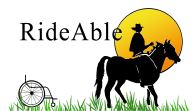In the ever-evolving digital era, new words, phrases, and terms regularly enter the public lexicon. One such intriguing term is Dihward. While its meaning might not be immediately familiar, Dihward has begun to appear in niche communities and discussions across online platforms, prompting curiosity and speculation.
This article explores the concept of Dihward—its possible meanings, contexts, and emerging relevance. Whether you’re an internet linguist, a content creator, or someone simply intrigued by unique terminology, understanding Dihward offers an exciting glimpse into the intersection of language, technology, and modern subcultures.
What Is Dihward?
The term Dihward does not appear in standard dictionaries, but that doesn’t lessen its relevance. Like many coined or internet-born terms, Dihward thrives in context-specific environments. Some speculate that it’s a portmanteau or stylized version of words like “digital” and “forward,” suggesting innovation or progression in digital spaces.
Others argue that Dihward represents a conceptual framework or artistic label, used to categorize digital creations, abstract media projects, or immersive content that defies traditional classification.
The Origins of Dihward
Pinpointing the exact origin of Dihward is difficult, given its underground nature. However, there are a few potential sources to consider:
-
Online Communities: Dihward first appeared in niche creative forums where experimental art, tech concepts, and virtual experiences are discussed.
-
Creative Tech Spaces: It’s been used to describe a genre or aesthetic that blends futuristic visual art with interactive digital environments.
-
Independent Developers: Some small development teams have adopted Dihward as a project name, brand, or thematic inspiration, reinforcing its ties to innovation.
What makes Dihward particularly unique is that it resists a singular, rigid definition. Instead, it serves as a flexible term for evolving ideas in art and technology.
Why Is Dihward Gaining Popularity?
Dihward’s rise in popularity can be attributed to a few core reasons:
1. Mystique and Curiosity
Unusual words with uncertain meanings often attract attention. The ambiguity of Dihward invites interpretation, which in turn fosters engagement and conversation.
2. Identity Marker
In digital spaces, unique terminology like Dihward can be used as identity markers within a subculture or community. Referring to something as “Dihward” may suggest belonging to a specific group or shared understanding.
3. Creative Branding
Small brands, startups, and independent artists often seek original, unclaimed terms for branding. Dihward offers an enigmatic yet modern-sounding label that’s memorable and search-friendly.
Dihward in Digital Culture
Digital culture thrives on innovation and reinvention, and Dihward fits seamlessly into this ecosystem. It represents:
-
Experimental Aesthetics: Many associate Dihward with abstract visuals, glitched textures, and futuristic compositions that break conventional design norms.
-
Virtual Environments: In some projects, Dihward denotes digital worlds or simulations built for immersive storytelling or art exhibitions.
-
Conceptual Frameworks: Thought leaders in digital theory may use Dihward to describe post-structural, decentralized, or non-linear approaches to digital creation.
In short, Dihward symbolizes boundary-pushing thought in the digital sphere.
Practical Uses of the Word Dihward
Despite its abstract nature, Dihward is now appearing in practical contexts. Here are a few scenarios where the term might be employed:
1. Naming Creative Projects
Many creators use Dihward as a title for songs, video games, art series, or digital portfolios. Its uniqueness makes it ideal for Google indexing and SEO.
2. Branding and Identity
Some digital agencies and tech startups are adopting terms like Dihward as brand names, giving them an edge in uniqueness and memorability.
3. Describing Digital Trends
Writers and commentators might use Dihward when describing trends that blend innovation, abstraction, and futuristic vision.
Is Dihward a Passing Trend or Lasting Concept?
Whether Dihward is a temporary internet fascination or a lasting linguistic innovation remains to be seen. However, its versatility and adaptability suggest it could persist, especially if it continues to be adopted by creators, artists, and tech innovators.
Its evolution may mirror that of other terms which began obscure but gained wider relevance—words like “metaverse,” “cyberpunk,” or “vaporwave” all started as niche ideas but eventually became cultural mainstays.
How to Use Dihward in Conversation
Using Dihward correctly depends on context. Below are a few example usages:
-
“This VR installation has a real Dihward vibe—disorienting but futuristic.”
-
“Our team is working on a Dihward-style mobile game, blending surreal visuals and real-time AI interaction.”
-
“The exhibit was pure Dihward—none of the traditional rules applied, and it was brilliant.”
The Future of Dihward
As with many internet-born concepts, Dihward may continue to evolve. It could grow into a fully developed genre, inspire movements in digital design, or even become a foundational term in discussions of postmodern digital theory.
What remains clear is that Dihward taps into the need for language that reflects the rapidly changing, hyperconnected world of creativity and innovation.
Conclusion
In summary, Dihward is more than just a strange or intriguing word—it’s a mirror of our shifting digital landscapes. While its definition may not be found in formal dictionaries, its presence is felt in art circles, tech conversations, and emerging virtual projects.
Whether you view it as a style, philosophy, or brand, Dihward represents a space where boundaries blur and innovation thrives. And in an age where language must keep pace with technology, Dihward may very well be a term for the future.

